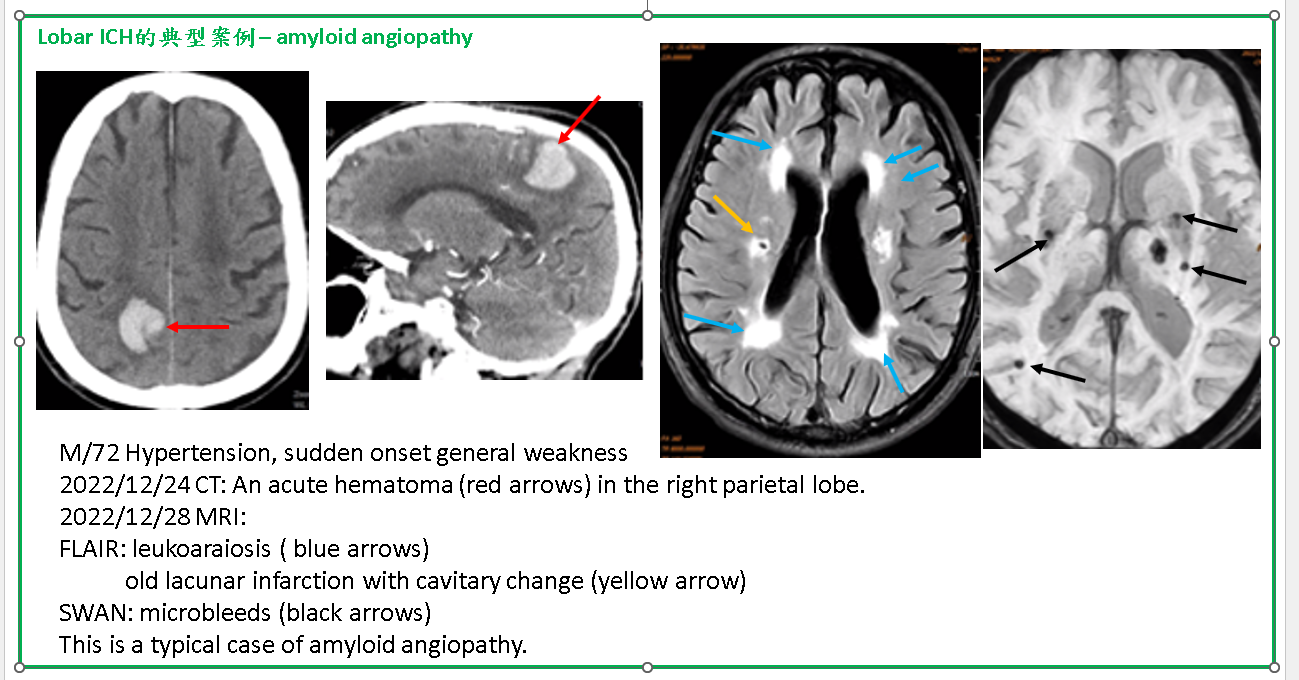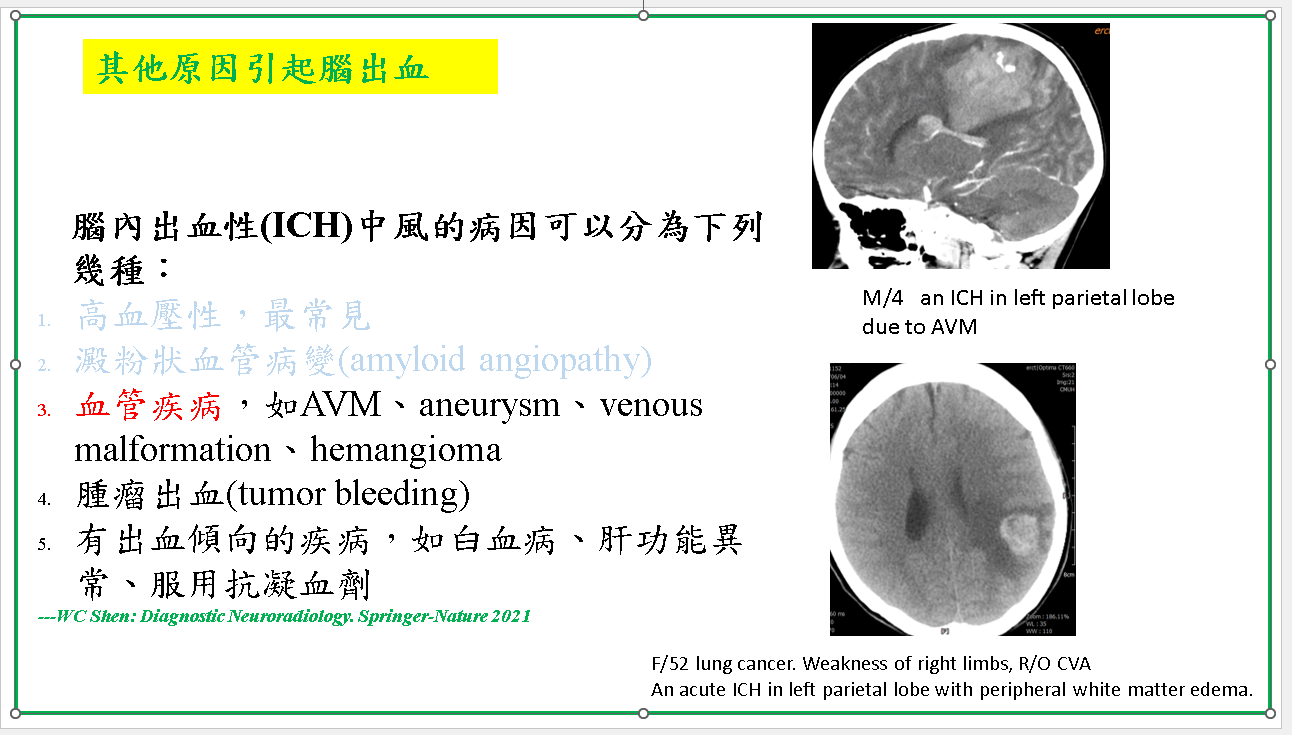CVA---ICH 重點
CVA---ICH 腦中風--腦實質內出血
(Intraparenchymal Hemorrhage, IPH)or ( Intraparenchymal Hemorrhage, ICH)
有關於出血性中風,先讀一段Harrison內科學的內容:
Chapter 370. Cerebrovascular Diseases/Intraparenchymal Hemorrhage
ICH is the most common type of intracranial hemorrhage. It accounts for ˜10% of all strokes and is associated with a 50% case fatality rate. Incidence rates are particularly high in Asians and blacks. Hypertension, cerebral amyloid angiopathy cause the majority of these hemorrhages.
Pathophysiology:
Hypertensive intraparenchymal hemorrhage (IPH or hypertensive intracerebral hemorrhage ICH ) usually results from spontaneous rupture of a small penetrating artery deep in the brain. The most common sites are the basal ganglia (especially the putamen), thalamus, cerebellum, and pons. When hemorrhages occur in other brain areas or in nonhypertensive patients, greater consideration should be given to hemorrhagic disorders, neoplasms, vascular malformations, and other causes.
The small arteries in these areas seem most prone to hypertension-induced vascular injury.
Lobar Hemorrhage (Other Causes of Intracerebral Hemorrhage)
Cerebral amyloid angiopathy is a disease of the elderly in which arteriolar degeneration occurs and amyloid is deposited in the walls of the cerebral arteries. Amyloid angiopathy causes both single and recurrent lobar hemorrhages and is probably the most common cause of lobar hemorrhage in the elderly.
腦實質內出血(ICH)是最常見的顱內出血類型,約佔所有中風病例的10%。ICH 具有較高的病死率,約達50%。在亞洲人及黑人族群中,ICH 的發生率特別高。其主要病因包括高血壓及腦類澱粉沉積性血管病(cerebral amyloid angiopathy, CAA)。
病理生理機制
(1)高血壓性腦實質內出血(hypertensive IPH or ICH),通常是由於大腦深部的小穿通動脈(deep small penetrating artery) 自發性破裂所致。最常見的出血部位包括:
• 基底核(尤其是putamen)
• 視丘 (thalamus)
• 小腦 (cerebellum)
• 橋腦 (pons)
以上都是深層出血(deep hemorrhage)
當出血發生於其他腦區或非高血壓患者時,應進一步考慮其他病因,例如:
• 出血性疾病
• 腫瘤出血 (tumor bleeding)
• 血管畸形(如AVM)
腦葉出血 (Lobar hemorrhage)
腦類澱粉沉積性血管病(Cerebral Amyloid Angiopathy, CAA) CAA 是一種老年性疾病,其特徵為小動脈退行性病變,並有類澱粉蛋白沉積於腦部動脈壁。此是老年人最常見的腦葉出血(lobar ICH)原因。
2001 NEJM 經典的圖描述ICH好發位置及供應的血管,deep ICH與Harrison大致一樣,
但對lobar ICH,NEJM描述也是hypertensive ICH之一,而Harrison說lobar ICH主要是amyloid angiopathy所引起
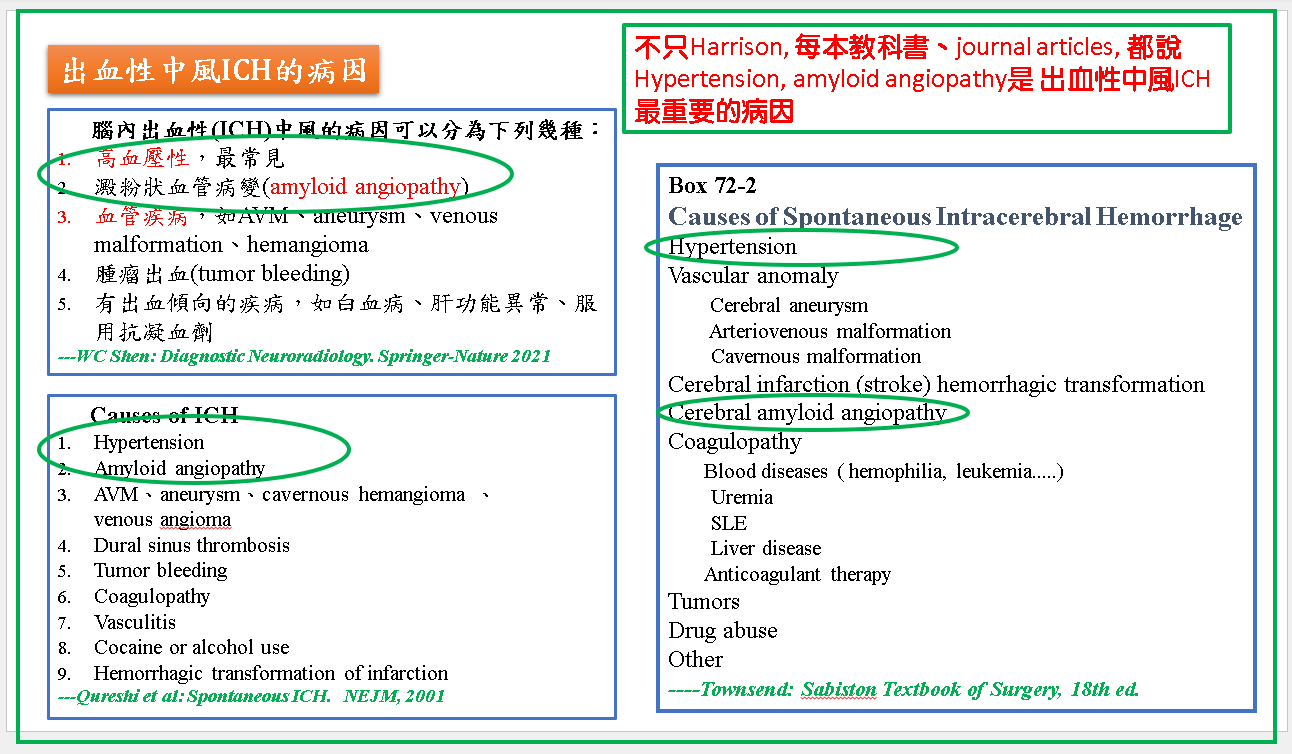
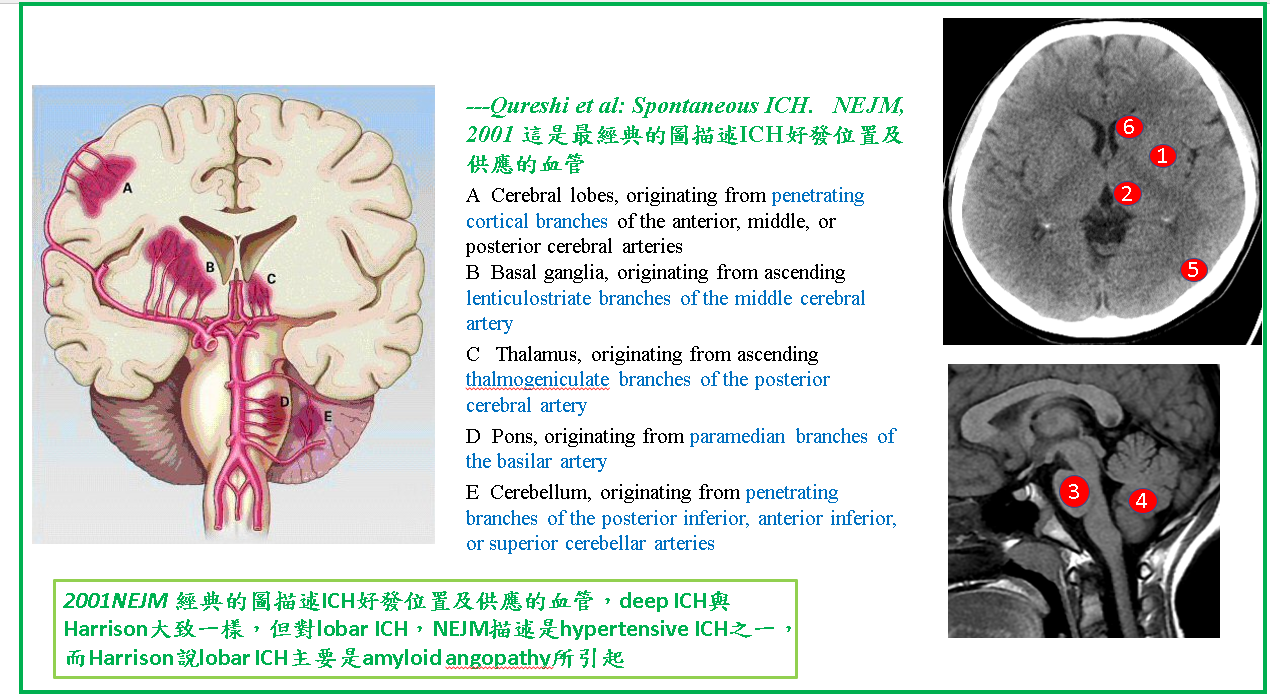
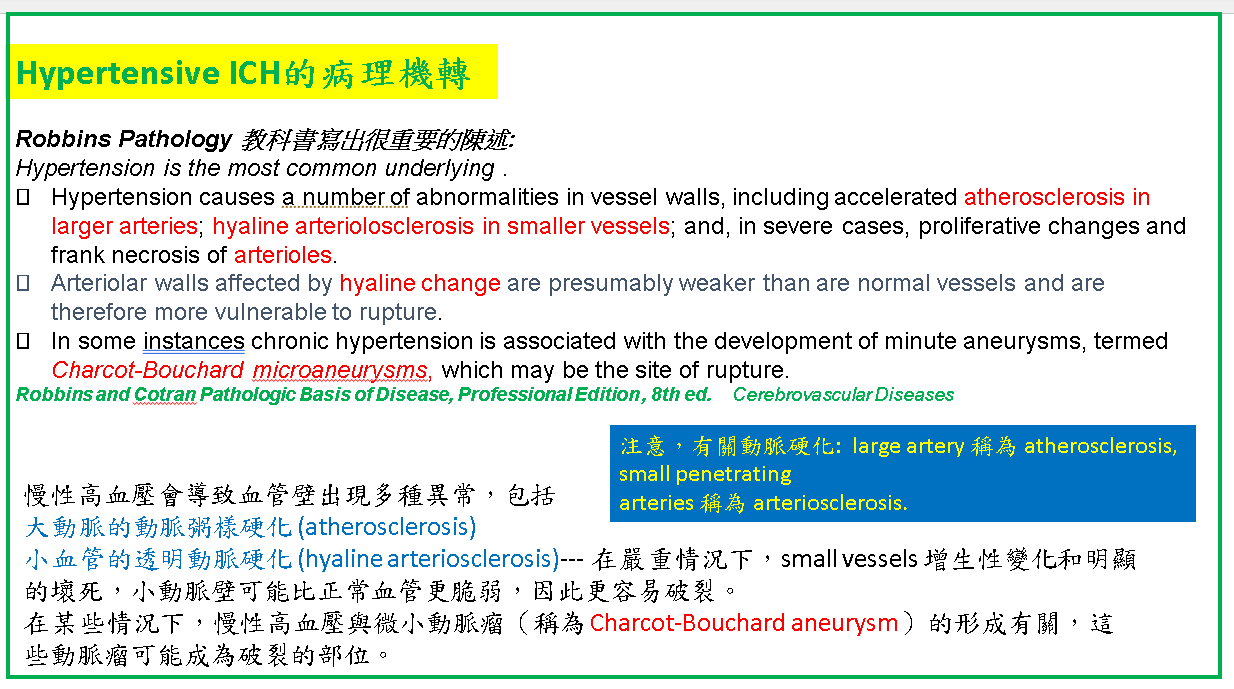
所以hypertensive ICH是small vessel diseas (SVD)的5類病變之一種。
(有關 SVD, 請參考 https://shenbbnr.lib.cmuh.org.tw/media/254
因此每一例 hypertensive ICH,都要順便看看有無合併其他small vessel diseases.
腦部小血管病變(small vessel disease) 引起腦的病變:
5類與腦小血管硬化相關的疾病
一. 出血:
(1) 微小出血(Microbleeds)
這是指小血管壁少量滲血,而不是明顯出血。microbleeds可發生於小腦、腦幹、基底核、皮質下白質,無臨床症狀。
(2) 出血性中風 (intracerebral hemorrhage, ICH):
這包含臨床上很常見的
(1)高血壓性出血性中風,好發於被殼(putamen) 、 視丘(thalamus)、腦幹(brainstem)、及小腦,就是所謂的深層出血(deep hemorrhage) (11,12)。
(2)澱粉狀血管病變(amyloid angiopathy),出血位置在大腦皮質或皮質下,稱為腦葉出血(lobar hemorrhage) 。
二 缺血性:
(1) 白質疏鬆(leukoaraiosis),或稱白質疾病(white matter disease):
(2) 小洞梗塞(lacunar infarction):
三 小動脈硬化扭曲:
小血管旁空間變寬(Enlarged perivascular space or Virchow-Robin space)。
(這一項比較不重要)
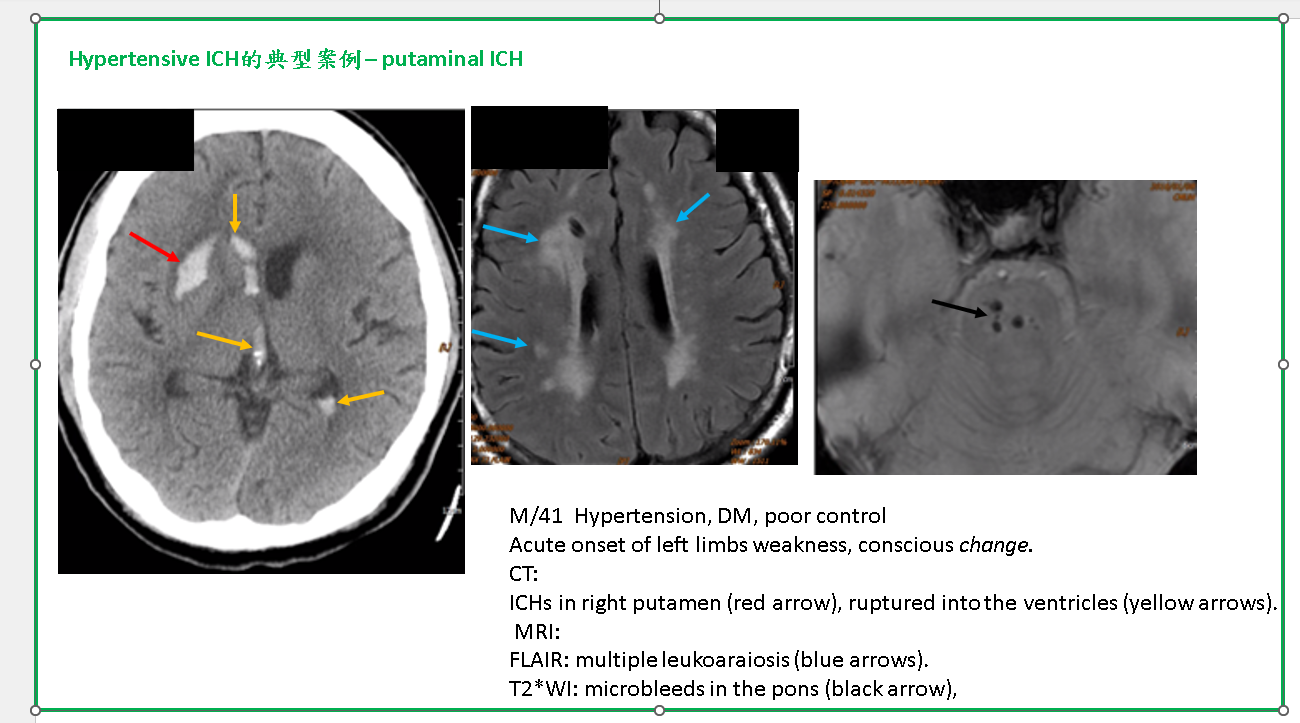
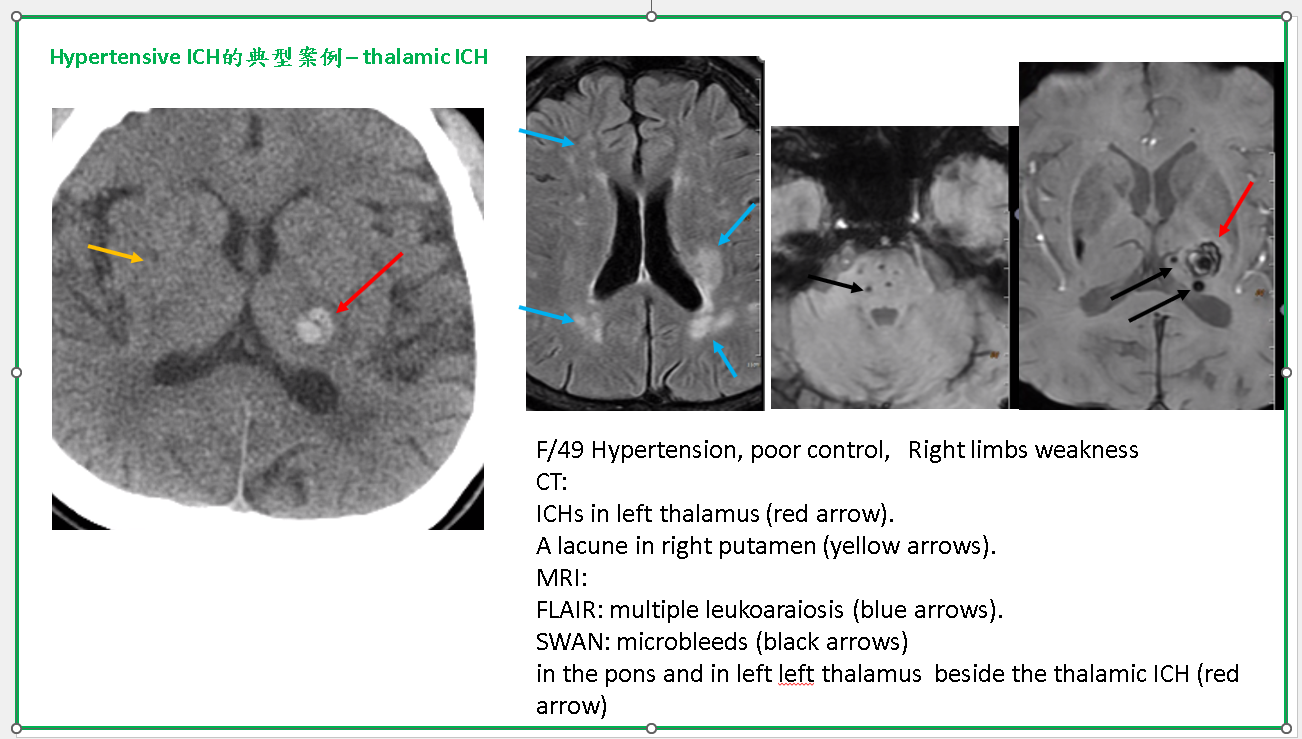
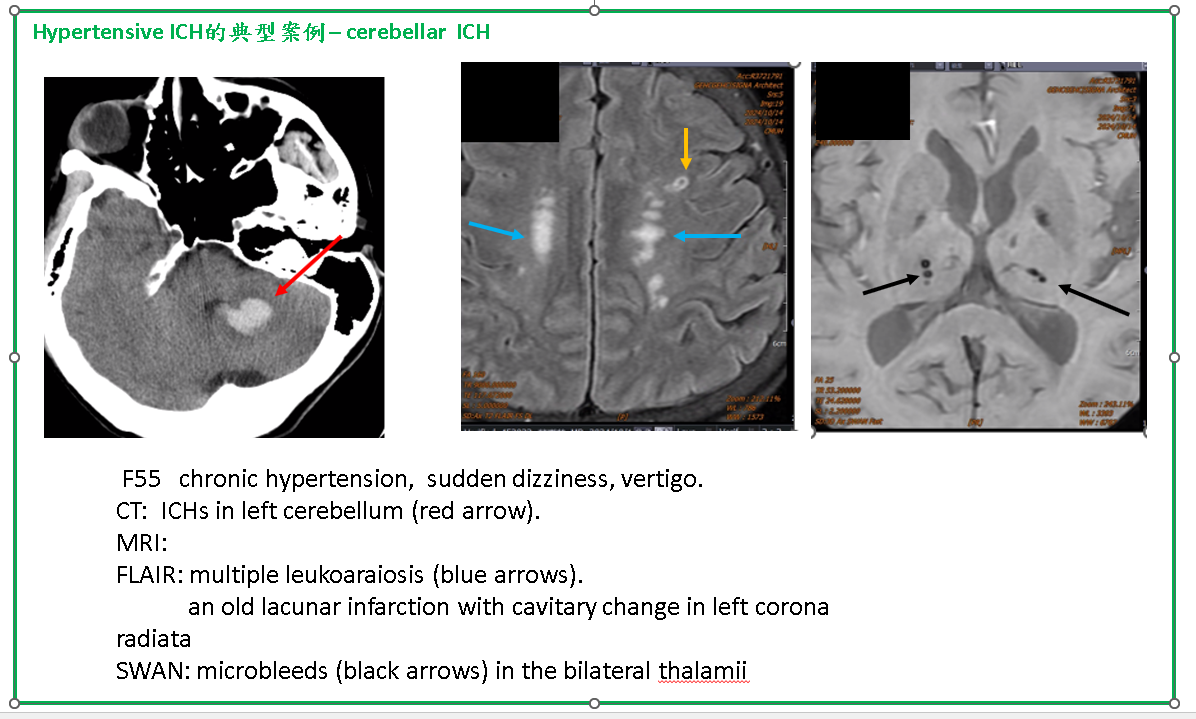
Lobar ICH的病理機轉--- Amyloid angiopathy
腦類澱粉狀血管病變(Cerebral
Amyloid Angiopathy)
Amyloid angiopathy是指ß-amyloid沉積在腦皮質或leptomeninges之中或小動脈壁,這種動脈病變常見於Alzheimer’s disease病患,也見於一般沒有神經症狀的老人。
Amyloid angiopathy是導致出血性腦中風原因之一,出血位置在大腦皮質或皮質下,稱為腦葉出血(lobar hemorrhage),以額、頂、枕、顳葉為多,少數也會在小腦及胼胝體,而且會反覆再出血,此現象有別於高血壓出血多出血在基底核、視丘、小腦及腦幹。
由於amyloid angiopathy也是腦內小血管疾病(small vessel diseas)之一種,因此CT 及MRI 也可見到白質疏鬆病變(leukoaraiosis) ,microbleeds, old lacunar infarctions 等等 SVD的影像指標 (image markers)。
